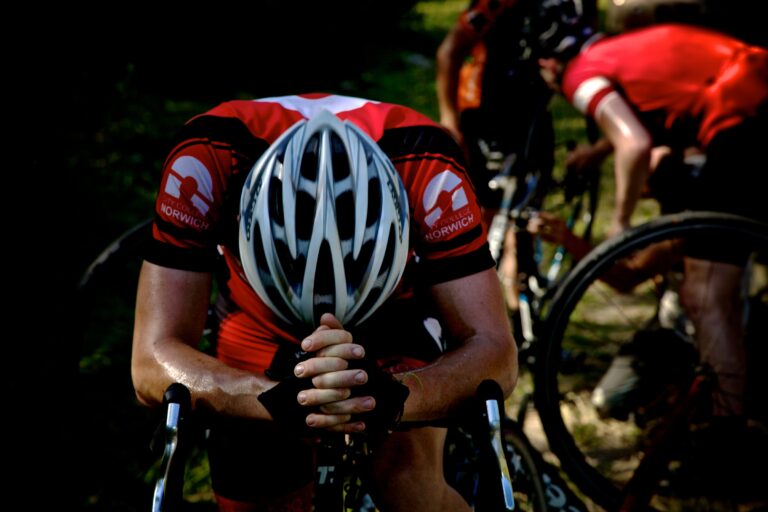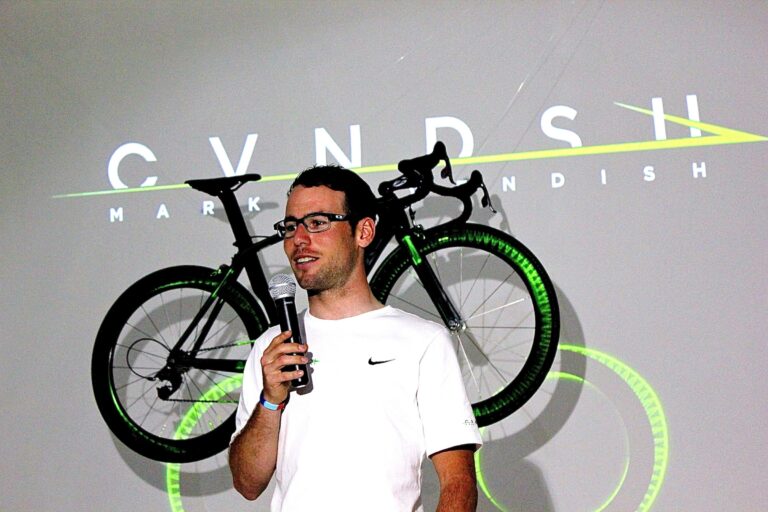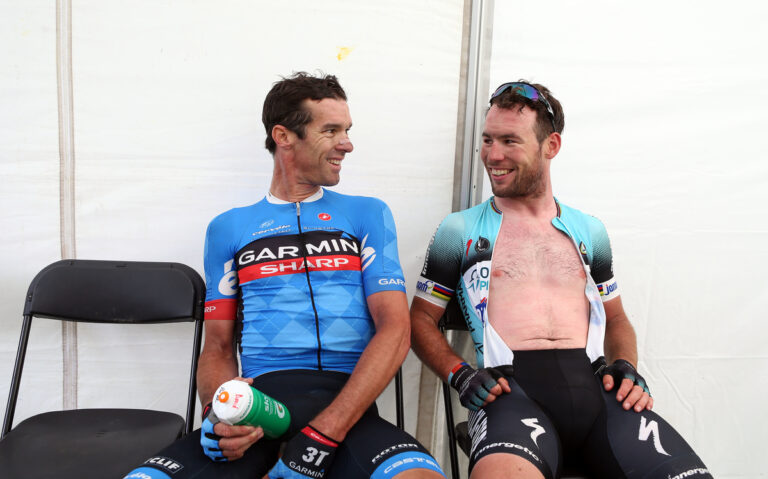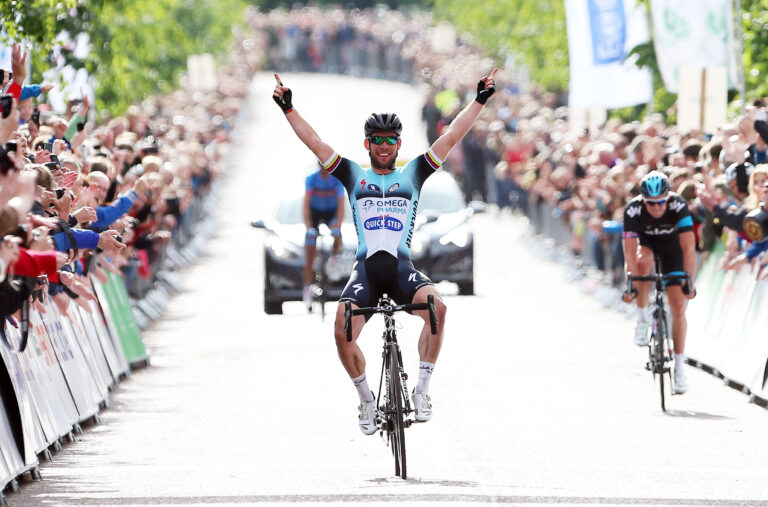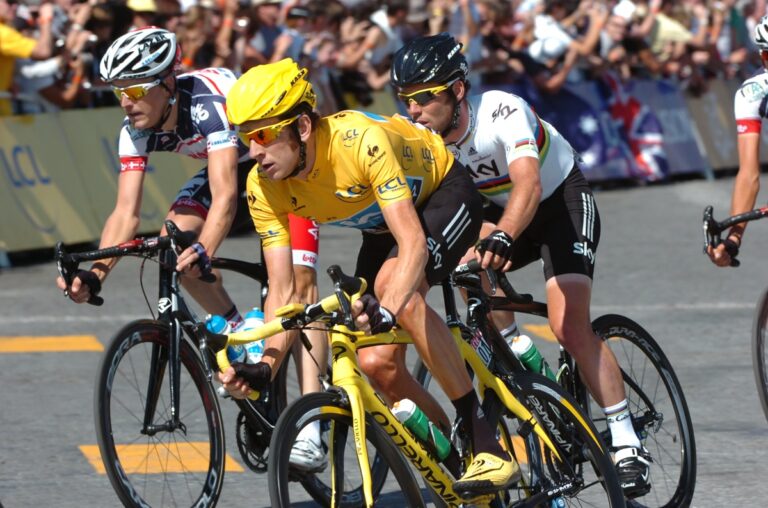Campagnolo is like no other brand in cycling – history and heritage combine with innovation and elegance to create the most iconic name in the sport.
Campagnolo has been at the forefront of component technology since 1933 and a star-studded celebration in Vicenza, Italy, saw some of the biggest names in cycling come together to honour the Italian manufacturer’s 80th anniversary.

Eddy Merckx, Greg Lemond, Miguel Indurain, Jan Janssen, Francesco Moser, Vittorio Adorni and Felice Gimondi all took to the stage to share their memories of Campagnolo but the warmest applause, and a standing ovation, was reserved for Valentino Campagnolo, son of founder Tullio and the company’s current president, who then spoke to RoadCyclingUK about Campagnolo’s past, present and future.
Merckx et al represent a bygone era but all, like Campagnolo, continue to carry with them an unmistakable power in the sport today and Campagnolo’s history is as important as its future, Valentino told RCUK.
“I think that every company that has a history behind it should be loyal to that history,” he said.
Campagnolo was founded in 1933, some six years after Tullio Campagnolo had his eureka moment. Tullio, an amateur racing cyclist and engineer, was leading the GP della Vittoria up the Croce d’Aune in the Dolomites on November 11 1927 when he needed to flip his wheel, which had one singlespeed sprocket on each side, in order to change gear. With his hands numb from the cold and the wheel’s wingnuts frozen, Tullio muttered the words: ‘Bisogno cambiá qualcossa de drio!’
‘Something must change in the rear’. Tullio lost the race but returned to his father’s workshop and developed the quick release lever. Campagnolo was born.
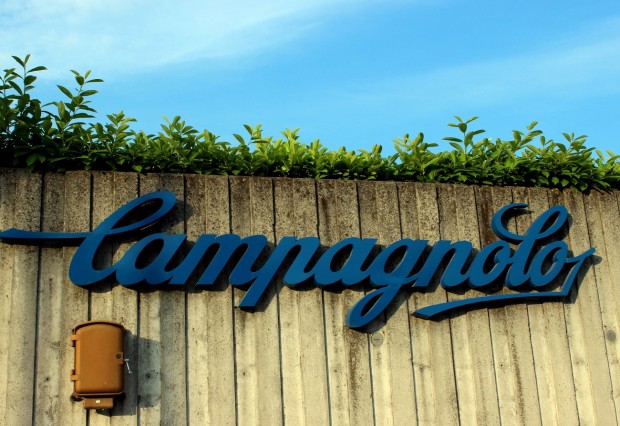
Tullio continued to innovate – the Cambio Corsa ‘rod gear’ came in 1940 and the Gran Sport groupset in 1950, to name but two groundbreaking inventions – and his components achieved success at the highest level of the sport. Cycling’s greatest champion, Eddy Merckx, only rode with Campagnolo and professional cycling continues to shape the company.
“Whenever we develop a product, that product is addressed to racers,” said Valentino.
“Campagnolo has to continue to develop the winning culture that we’ve had in the past. That comes through a very close and tight connection with the racing field. That means not just making products for racing bikes, but it means products that meet the racers demands.
“The company needs to be always in contact with racers, their teams and the mechanics – that is the winning approach for Campagnolo.
“It is essential because, while inside the company we have a testing department where we invest a lot of money, what happens on the road is very different to what you can try to realise in the testing lab.
“It’s impossible to do the same thing so for Campagnolo it is essential that, having passed the tests inside the company, that a product goes outside the company and onto the road with the riders.”

Campagnolo dominated the professional peloton in years gone by and, from 1968 to 1998, 27 of the 31 Tour de France winners used its components. Shimano and SRAM have held a monopoly over cycling’s most important race since, with Óscar Pereiro’s inherited 2006 victory (the “winner”, Floyd Landis, was later disqualified on a doping violation) Campagnolo’s sole success on the biggest stage since Marco Pantani’s win in 1998, but Valentino considers Campagnolo’s sponsorship of five WorldTour teams (Ag2r La Mondiale, Astana, Lotto-Belisol, Movistar and Vacansoleil-DCM) the lifeblood of the company.
It’s “not just important, but absolutely essential”, he says, in order to continue the development and testing required to service Campagnolo’s high-end market position.
The 2013 Giro d’Italia, perhaps an even greater stage for an Italian manufacturer, proved a happy hunting ground for Campagnolo, with Vincenzo Nibali (Astana) winning the race on a machine equipped with the 80th Anniversary Super Record groupset and Carlos Betancur (Ag2r La Mondiale) crowned best young rider, while Lotto-Belisol’s Adam Hansen won stage seven and Movistar recorded four stage victories, including Giovanni Visconti’s stage 17 win in Vicenza, home of Campagnolo.
Visconti’s victory came on the day Campagnolo hosted its 80th anniversary party and, having claimed his second win of the race, the Italian visited Campagnolo HQ to celebrate with Valentino, his family and a selection of the company’s guests and employees.
Campagnolo moved to its current base in Vicenza in the 1980s and now the 36,000 square metre site is home to 350 employees. Campagnolo also has two factories in Romania: the first, MechRom 1, opened in 2005, while the second, MechRom 2, was founded in 2011. Together the two overseas facilities employ approximately 400 people.
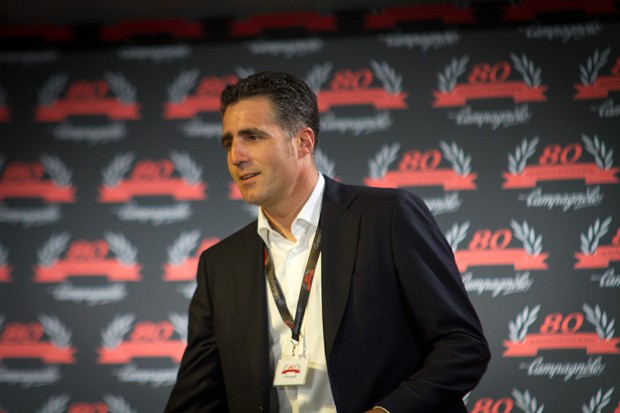
The Italian spirit remains at the heart of the company – it has built its reputation on a combination of flair and functionality – but the modern economic reality forced production to be moved, in part, to Romania.
“It was mandatory to find a way to decrease manufacturing costs but we need to, and I want to, continue to have part of the activity done in Italy,” said Valentino.
All Campagnolo components are designed in Italy and many are still made in the Vicenza factory. Huge presses, each the size of a three-storey building, could be seen stamping cassette sprockets and chainrings out of sheets of metal during our factory tour earlier in the day.
The site on Via della Chimica, on the industrial outskirts of Vicenza, is also home to the test lab, where, for example, an EPS rear derailleur can be put through millions of cycles, as well as the R&D department. Some of the biggest manufacturing secrets in cycling are housed behind the factory’s walls and we were forbidden from taking photographs during our visit.
Valentino is keen to stress production has not been outsourced, instead both Romanian facilities are owned by Campagnolo. The choice to setup shop in Romania over the Far East was deliberate, he says, and Campagnolo can claim to be the only major component manufacturer to have production entirely in the western hemisphere.
“The Romanian language is pretty close to Italian as it’s a Latin language,” said Valentino. “We have some Italians working in Romania who moved there without knowing Romanian but who can now communicate easily.
“Nobody can do anything alone. Product development is a continuous discussion so keeping production in Romania makes things much easier.
“We want to keep, very strongly, the concept of ‘Made in Campagnolo’. There are products made in Italy, and there are products made in Romania, but what is important is that we can say, ‘Made in Campagnolo’.”
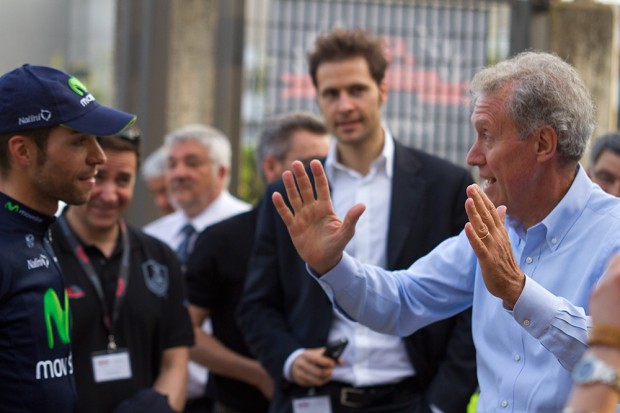
It’s a mark of quality, of prestige, developed over 80 years, but while innovation continues to drive the company’s products forward at a pace, Campagnolo’s core principles remain unchanged.
“The bicycle has evolved greatly, especially in the last 10-15 years, and even more in the past five years,” said Valentino. “We can expect that evolution to continue and we need to be able to follow or, even better, to try and anticipate the evolution – but everything has to be based on performance and reliability.”
It’s a softly-softly approach which saw Campagnolo spend some 20 years developing its electronic groupset, with the eventual launch of Super Record EPS and Record EPS coming in 2011, two years after Shimano Dura-Ace Di2.
Campagnolo’s principles – “to look to the future while preserving our DNA” – have seen the company grow by 21 per cent since 2009. While 64 per cent of sales come from Europe, the Far East – China, Taiwan and Hong Kong specifically – is the fastest growing market.
Campagnolo is, more than ever, a global company, but that growth can be attributed to the continuous innovation which has run through its veins since 1933.
However, Campagnolo are not alone in pioneering change. Shimano Dura-Ace Di2, given an 11th sprocket for 2013, can be found on the bikes of ten WorldTour teams, while earlier this year SRAM unveiled its hydraulic rim and disc-brake ready Red groupset, which itself is expected to make its way onto the American firm’s three sponsored teams later in the summer.
“Sometimes we need to be able to anticipate the future needs of the market,” said Valentino. “This is a tough job.
“But staying behind racers and being willing to listen to their experiences, to the reasons why they lost a race, will see us continue to develop. That is the difference for Campagnolo.”
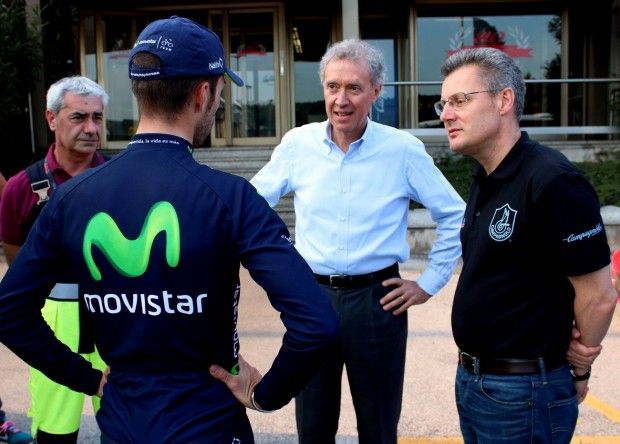
Campagnolo’s exotic appeal remains as strong for cycling purists now as it has been throughout the company’s 80 year history. Andy Hampsten, winner of the 1988 Giro d’Italia and another guest as Campagnolo’s 80th anniversary party, said that despite using Shimano components throughout his career, all the money he saved as a boy would go into a Campagnolo pedal box, to buy Campagnolo products. “My fortune as a teenager went slowly into building one bike,” Hampsten told RCUK.
But competition has never been so fierce – Shimano is the dominant market force and SRAM has aggressively developed and marketed its groupsets since first launching into the road market in 2005 – and Valentino recognises the need to lead Campagnolo through the 21st Century.
Campagnolo is shifting its strategy away from the aftermarket sales (for riders who want to dress a frame in Campag components) on which it has relied, to the OEM market, with the aim to see more off-the-peg bikes equipped with products bearing the Campagnolo name , but the company’s raison d’etre – to produce what it believes are the best bicycle components available – will remain unchanged.
“Competition is tougher and tougher,” said Valentino. “I don’t think I am saying anything original when I say that in the future the market will be even more competitive, so we need to better understand the needs of the racers, the dealers and consumers. We need to listen.”

